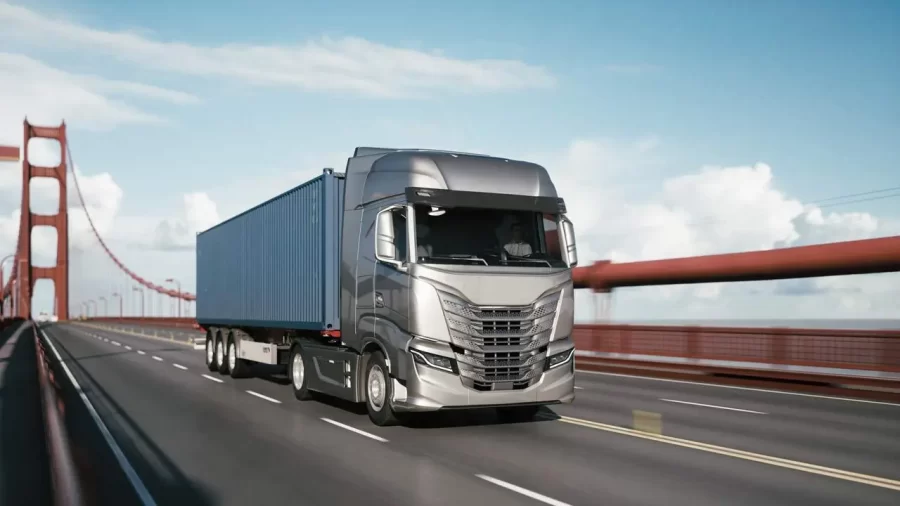Every part of our lives can be upended by significant global events. There is no exception to the difficulties that the transportation trucking sector faces as we head into the last quarter of the year.
2020 was a devastating year for the transportation sector, especially air travel, facing losses of $84.3 billion. It is not just the airline industry that is plagued by issues. Ground transportation and logistics companies encounter hitherto unseen difficulties, ranging from supply chain disruptions to border crossing closures and delays.
We’ve listed some of the biggest challenges affecting the transportation industry, especially the trucking sector, to help pursue more seamless corporate operations.
Every one of these problems has its own set of difficulties when solving it. Ultimately, if fixing it were simple, someone would have done it by now, right?
Read on to see how you may handle some of these issues in your company. There are answers to these problems, and we’ve included them as well.
1. Adjusting to a volatile economic environment
The transportation industry has always been highly dependent on the economy and subject to cycles. Many firms have had to adjust in the last few years to significant inflationary pressure, fast-rising interest rates, an unprecedented worldwide pandemic, supply chain problems, and cost-of-living issues. Maintaining successful operations in the face of all these challenges is a never-ending task, mainly since it is difficult to know what lies ahead.
There is nothing you can do about the significant issues affecting the overall economy when there is a slump. Instead, focus on the more manageable problems that you are in control of. This is an excellent chance to learn more about how your business is doing concerning driving times, fuel usage, and route planning, as well as to identify areas for improvement.
According to trucking news, optimizing operational efficiency during economic upturns is equally crucial, as it will make your company more adaptable and sturdier during the subsequent downturn.
Fuel costs make up many of a fleet’s operating expenses; price changes significantly affect a business’s bottom line.
2. Reducing the price of gasoline
More than 40% of a fleet’s overall operating costs may be attributed to fuel. Because of this, even a slight price rise can have a significant impact on a business’s profitability.
Prices are erratic and frequently impacted by geopolitical events beyond the control of fleet owners, just like the rest of the economy. However, there are steps you can take to reduce the amount of fuel you use.
How can you find ways to save costs without this? For instance, a skilled driver will plan their travels more effectively and consume less fuel. However, data is required to determine where and how to apply for training.
3. A severe driver shortage
According to the most recent projections, the worldwide driver shortage is expected to worsen over the next five years and to double. Because of this, it will get harder for transportation companies to even continue running their current businesses, much less grow and prosper.
Since work-life balance is also a significant contributing component, this problem cannot be solved by just raising earnings. In this instance, maintaining a work-life balance may involve longer days away from home and work hours.
Modifying the working environment can alter the industry’s opinions. Although many truck owners are delaying electrification until the charging infrastructure is more established, those who jump in early may benefit first.
4. Adjusting to the change in energy
Haulage businesses are facing mounting pressure to abandon diesel due to tighter emissions regulations and consumer demand for more environmentally friendly transportation.
As early as 2025, a number of significant cities—including Paris, Athens, Madrid, and Stockholm—plan to outlaw diesel cars from entering their downtown areas. Less known, though, is which fuel sources will be substituted. As a result, many companies are waiting to see what happens. But they run the risk of falling behind if they do this.
Besides, there is a growing interest in alternative fuels, but there still needs more clarity regarding the best time to take action. A select group of businesses are now shifting first. There will come a time when the market reaches a tipping point, and companies will suddenly realize that all of their rivals are switching, so they will follow suit.
5. Locating secure parking lots
Drivers are finding it more and more difficult to locate safe and secure parking spaces for overnight stops, which forces them to pull over in dangerous spots.
Concern over this issue is spreading throughout the EU, but it’s especially bad in the US, where the US Department of Transportation (USDOT) estimates that there is only one parking space for every eleven trucks. Although the EU has already put laws in place to prevent a situation like this from happening on European roadways, finding secure parking is still difficult.
It’s strange that we assign drivers such large, costly cars packed with valuables, but we don’t consider their welfare more seriously.
Uncertainty about who should be in charge of providing these amenities contributes to the issue. Although it’s impractical to expect transportation businesses to handle the problem independently, they can help by offering their drivers financial support for things like the cost of using secure facilities.
Better protection for their goods will result from this, and it will also provide their drivers a sense of worth, which will increase driver retention.
6. Adjusting to urban planning in the future
Creating more livable cities through ideas like 15-minute cities, Healthy Streets, and Complete Streets is currently the main focus of urban planning trends. Although freight and logistics constitute a substantial proportion of a city’s traffic patterns, these notions frequently fail to acknowledge their significance.
Ultimately!
In 2024, the transportation sector will confront a number of difficulties, such as volatile fuel prices, a scarcity of drivers, and the requirement for technology advancements. Businesses that embrace digital transformation and make use of cutting-edge solutions can successfully manage these challenges and maintain their competitive edge.









